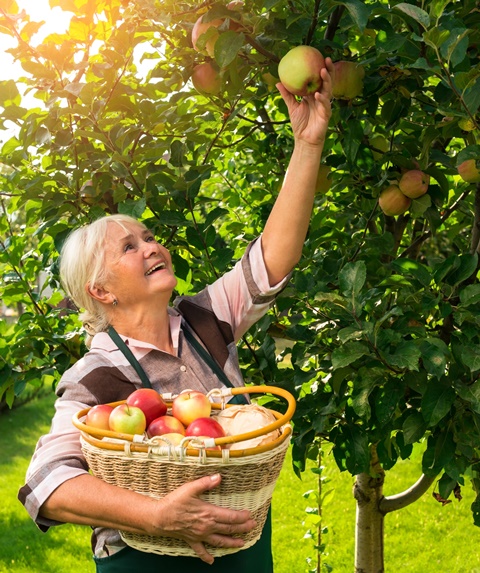Nine long-term care facilities in Ontario harnessed their purchasing power to serve up more local food to residents, and the benefits are paying off. Residents are enjoying more fresh, local meat and produce, staff have a new appreciation for local food, and purchases are strengthening the province’s agricultural sector.
Every year, Ontario’s Broader Public Sector institutions spend an estimated $745 million on food and beverages. That prompted members of the Golden Horseshoe Food and Farming Alliance (GHFFA) – a group of Ontario regional municipalities and agri-food organizations – to add more local food to the menu. They set a goal to increase local food procurement by five per cent in nine long-term care facilities over two and half years. They never dreamed how the program would take off. A whopping 24 per cent of the food served is now sourced locally, at no additional cost.
“The homes were worried about reaching the 5per cent local food goal, but the project exceeded everyone’s expectations,” says Stephanie Crocker, principle consultant and Serving Up Local coordinator. “The program saw a 602 per cent increase in Ontario pork served in the homes, 124 per cent increase in fresh seasonal produce and 494 per cent increase in new provincially-sourced meal entrees. And the best part – surveying showed it improved residents’ and their families’ perception of the quality of food in long-term care.”
Dieticians of Canada LTC Action Group reports that fresh fruit, vegetable and high-quality protein are typically the first items cut from the menus when budgets at long-term care facilities are tight. “The food directors and staff at participating long-term facilities were thrilled that sourcing local food didn’t negatively impact their food budgets,” says Crocker.
Getting closer to the source
Serving Up Local was a partnership between Durham and Halton Regions, the City of Hamilton and the GHFFA to increase the amount of local foods offered in their facilities with a special focus on long-term care facilities. The group set out to implement priorities that were part of a joint action plan to increase the viability of farming in the area and expand the region’s role as a leading food and farming cluster of Ontario. And the project began by evaluating each facility’s food purchases to identify where food items could easily be shifted to a local source, like fresh seasonal fruits and vegetables or pork.
Tours and workshops were organized for facility staff to learn about where local food is sourced, how it can be prepared in their own long-term care facilities and discuss how local food can meet nutritional needs of residents. “A tour of VG Meats’ processing facility and farm resulted in the creation of a new entrée – a cottage roll that has become a popular menu item and is now available through a distributor to other long-term care facilities in Ontario,” says Crocker.
Feeling better about eating local
Making the switch to offering local food options shows residents that food staff are responding to their interests. The majority of residents surveyed felt that being offered local foods made them feel better about the meals served, that local food makes them feel “good”, and that they want to support local farmers.
“I wanted to serve farm-fresh, nutrient dense food,” says Alice Martone, Nutrition Services Supervisor for Halton Region’s three municipally-run, long-term care homes. “It gives the residents satisfaction and comfort to eat the freshest product possible, like they did many years ago. And it was very satisfying that the meat used by the cooks is from local farms.”
Serving Up Local was made possible with funding from the Government of Ontario, in partnership with the Greenbelt Fund, a not-for-profit organization focused on investments to get more local food onto the plates of Ontarians. “The Greenbelt Fund was integral to building the project and helping us make connections with the local food value chain,” says Crocker.
The next course
“We have a new three-year project to evaluate the cost of increasing local food procurement in the Broader Public Sector,” says Crocker. “Cost and budgets are the number one barrier for transitioning to new food sources. Serving Up Local proved it can be done economically and we want to know more.”
The Serving Up Local – Economic Analysis project is a partnership with the GGHFFA, University of Guelph and the Ontario Ministry of Agriculture, Food and Rural Affairs. This economic analysis of increasing local food procurement in long-term care homes will build on the groundwork of the original project, working with facility staff and residents in an expanded 22 long-term care homes
For more information on the Serving Up Local project, resource examples, mealtime engagement toolkits, case studies and project manual, visit www.foodandfarming.ca/current-projects/serving-up-local.
| Jeanine Moyer is the Senior PR & Content Specialist at AdFarm Guelph. |


